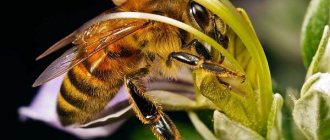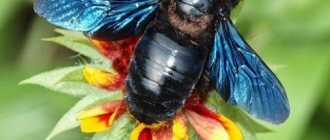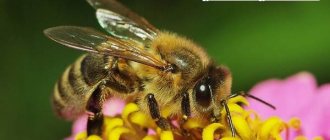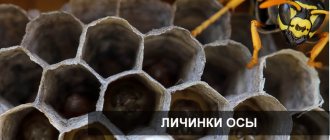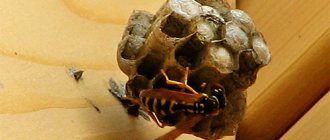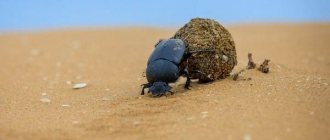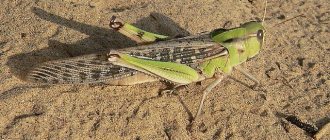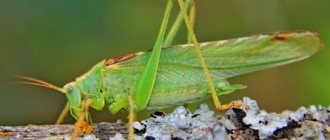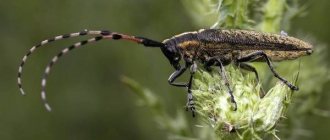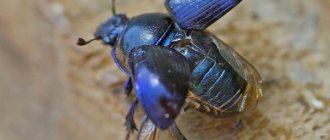Common carpenter bee (lat. Xylocopa valga). Modern science knows more than a million species of different insects. They live everywhere. The famous writer and traveler Vasily Peskov even called them the masters of the Earth. Among insects there are many flying representatives of the class. They can be useful or harmful, harmless or dangerous. Bees are one of the most beneficial insects. They pollinate plants and produce vitamin-rich honey. However, there are completely different bees.
Description and features
All over the world, scientists identify more than 20 thousand species of bees. Among these countless insects, the carpenter bee occupies a special place. The official name of this insect is violet xylocopa. In natural conditions it is quite difficult to see it, but in the photo the carpenter bee looks amazing.
Its distinctive feature from its counterparts is the color of the body and wings. The bee's body is black, and its wings are dark blue with a purple tint. The bee is covered with short black hairs. The mustache is also black, but has a reddish tint on the inside.
Distinctive features also include shaggy legs and large, powerful jaws that are capable of grinding fairly strong materials. The common carpenter bee always chooses either a tree or anything made of wood as its home.
The bee collects pollen and pollinates plants several times more efficiently than other flying insects, since it has a thick layer of hairs on its legs. But if an insect has settled next to a person’s home, you should not expect anything good. Trees and furniture can be damaged forever.
Interestingly, in terms of its size, the carpenter bee stands out significantly from other bees. Its average length is about 2.5 centimeters. Large individuals reach 3 centimeters. These sizes make the insect look like a bumblebee or a huge fly. It is very easy to determine that a bee is nearby, since the wings, although not large compared to the body, work very actively and make a loud buzzing sound.
It is worth noting that a carpenter bee never attacks a person without reason. As a species they are not very aggressive. Only females have stings. However, of a carpenter bee sting . By biting, insects inject poison into the wound. It provokes severe swelling, which can last up to five days. The poison affects the human nervous system.
When bitten, side effects such as nervous shock often occur. You should be careful - a bee sting on the neck is fatal for both humans and animals, as the airways become swollen. Oxygen supply is blocked and death can occur within minutes if emergency medical care is not taken.
How dangerous is a carpenter bee sting?
The insect is not aggressive towards humans. But this behavior is observed until a real threat appears. If this is not the case, the insect does not pay attention to the presence of a person and continues to go about its business. Drones don't attack at all. The female's venom is quite dangerous due to the fact that it causes large swelling of the tissues. A bite to the throat is fatal.
Kinds
Xylocopa is a very ancient bee. It existed long before modern civilization and is considered a kind of “living fossil.” Scientists count more than 700 species. The carpenter bee lives in different parts of the planet. In the vastness of America you can find an amazing subspecies that is completely black in color.
They are much larger than their Russian relatives and are particularly aggressive. Cases of this bee attacking a person are often recorded. The black carpenter bee to collect pollen twice a day - at dawn and in the evening, at dusk.
In European territory, carpenter bees are found in Germany. Surprisingly, this particular species is practically immune to various diseases. They have strong immunity. The harshest and most dangerous continent, Africa, has its own species of insect. It is mainly found in Tunisia and Algeria.
A distinctive feature is a flat, wide belly and long mustache, about 6 millimeters. African carpenter bees are very aggressive and dangerous, in principle, like all animals on the continent. In addition, after stinging a bee, it smears its victim with propolis, which is very difficult to wash off from the skin and clothes.
May cause a severe allergic reaction. You need to be very careful, avoid the bee and under no circumstances provoke it with sweeping movements of your arms and legs. Bumblebees are also considered carpenter bees.
Many scientists are inclined to believe that bumblebees are a subspecies of xylocopa. But they have a traditional yellow and black color. The level of aggression is very high. They can attack both animals and humans without warning.
How to get rid
So, the carpenter bee itself is harmless, but only if it is far from populated areas. Otherwise, the insect becomes dangerous to humans: it makes a nest in a residential wooden house or destroys agricultural buildings.
As has already been said, these bees bite painfully, and if you suddenly do not notice your new neighbor in time (even despite her impressive, albeit for an insect, size), then you risk suffering both physical and material damage: a painful bite and pretty much eaten walls.
How to remove xylocopa?
For this, various methods are used, more or less effective:
- Pesticides against wasps and other large Hymenoptera. They can be in the form of powders, aerosols, gels, and so on. It is impossible to say which one is optimal: all of these remedies have their advantages and are effective when used correctly. In particular, agents such as carbaryl (Sevin) and boric acid are effective.
- Gasoline . It is very toxic and will undoubtedly kill bees and their larvae if poured into xylocope tunnels. But you should be extremely careful with this substance: firstly, it is flammable, and secondly, the human body’s reaction to gasoline is not much different from that of insects. So take care to protect your skin from getting gasoline on it, and your lungs from inhaling its toxic fumes. It is best to use a spray bottle.
- Finally, there are more humane (relatively) methods of dealing with carpenter bees: You can scare them away with loud noise , which they cannot stand (using a music center near their nest, turned on at full volume). The bravest ones can use a tennis racket and swat a couple of pests, striking fear into the hearts of others (bees, by the way, have no hearts).
Lifestyle and habitat
The carpenter bee is an insect that prefers warm climates. That is why you practically cannot find it in the northern regions and continents, where low temperatures prevail. Favorite places to build a home are steppes and forests. Especially many species of xylocopa live in the southern parts of Russia and the Caucasus.
Perhaps this is the only type of bee that prefers to live on its own, without even forming small families. They do not gather in swarms and live individually, choosing their habitat to suit their taste. Most often these are places where there is dead wood. The nest can be found in a telegraph and electric pole, in a wooden house, in the walls of outbuildings, even in an old closet.
When choosing a place of residence, the carpenter bee is not at all guided by the availability of food. This is not the main thing for her. Possessing powerful wings, the insect is able to fly great distances every day to obtain nectar. Hardy insects are able to move away from home to a distance of more than 10 kilometers and return back.
As a rule, insect activity begins with the onset of the first stable warm days, early or mid-May. Active flight continues throughout the summer months and ends at the end of September, when the temperature at night drops below five degrees. In rare cases, if weather conditions permit, the common carpenter bee continues to operate in October.
Interesting Facts
The carpenter bee is a peaceful insect. She can use the poisonous sting for self-defense or to protect future offspring. You should not touch her nest, so as not to provoke the bee's wrath.
A bee can become food for insectivorous birds, frogs, and spiders. But thanks to their large size and durable housing, the carpenter rarely becomes their prey.
The carpenter bee is one of the most ancient insects on Earth. It appeared about 100 million years ago and is a living relic.
This species of bee is listed in the Red Book of Russia. The reduction in numbers is associated with cutting down dead wood and applying paints and preservatives to the surface of wooden posts and buildings. The list of protective measures includes the identification of bee nests, their preservation, as well as a ban on catching these rare insects.
Nutrition
The purple carpenter bee does not have any special nutritional requirements. She, like all her relatives, eats nectar and pollen. In search of enough pollen, a bee searches about 60 flowers a day. Bees are especially fond of acacia and red clover, whose flowers contain twice as much pollen.
The carpenter bee collects pollen and uses its own saliva to soften it. The resulting composition is diluted with nectar. It is stored in special honey grooves and serves to prevent pollen from falling off during long flights.
Bee saliva contains colonies of microorganisms that immediately begin to work as soon as pollen enters the grooves. The fermentation process begins. It turns pollen into the so-called bee bread - bee bread. Bee bread is consumed by both adult bees and newly born bees.
Bees producing offspring, thanks to secret glands, soften the beebread and turn it into royal jelly, rich in minerals and vitamins. The larvae feed on it. Royal jelly is a very valuable substance that people use in cosmetology and medicine.
Which bumblebees do not build nests and do not collect nectar?
Not all bumblebees have exemplary families, the representatives of which perform the functions assigned to them. There are so-called cuckoo bumblebees (also known as parasitic bumblebees or whisperers) (lat. Psithyrus), which belong to the subgenus of social parasites from the genus of bumblebees and include 29 species. These lazy people do not build their own nests and do not collect nectar. Each of the parasitic species, as a rule, looks very similar to its host. Female cuckoo bumblebees can sometimes be distinguished only by the absence of pollen-collecting devices (brushes and baskets) on their legs. A female cuckoo enters a bumblebee's nest and lays eggs. Worker bumblebees feed the larvae as if they were their own. Therefore, cuckoo bumblebees do not need workers. Some species of cuckoo bumblebees, such as Bombus Rupestris, Bombus campestris, Bombus barbutellus, Bombus quadricolor, parasitize several species of bumblebees. Some species of parasitic bumblebees have only one host: for example, Bombus bohemicus chooses the burrow bumblebee (lat. Bombus lucorum) as its host. Having penetrated the host's nest, cuckoo bumblebees behave differently: some species are aggressive, they kill the queen and guards, others coexist for some time.
Photo credit: Alvesgaspar, CC BY-SA 3.0
Reproduction and lifespan
The purple carpenter bee does not welcome any kind of neighborhood. With the onset of spring, it is time for bees to have offspring. The female takes a long time to choose a quiet, secluded place, moderately humid and warm. Most often, the choice falls on dry, rotten trees or shrubs, and prepares a separate nest for itself.
Bees have strong jaws. With her powerful jaws, the female gnaws out multi-level, gentle tunnels in the pliable tree. By the way, it was for the ability to build such “multi-room apartments” that this shoulder was given the name “carpenter”.
The moves that the female makes in the wood are distinguished by perfectly smooth edges. To an inexperienced person, it may seem like the holes were made with a drill. During construction, the female makes loud crackling sounds, which can be used to determine her proximity.
When the nest is ready, the female carpenter bee prepares a special mixture of nectar and pollen. The female places a drop of this composition in the compartment, lays an egg in it and seals the hole-room. Each such partition is the floor for the next “room”. The length of each stroke can reach 20-30 centimeters.
In this way, the bee lays ten to twelve eggs, and then hermetically closes the entrance to the nest. The sealant is wood mixed with bee saliva. The nectar composition provides excellent nutrition for the larvae, which emerge around mid-June.
One drop prepared by the female is enough for the larva until the fall, when it turns into a strong young bee. It is worth noting that the development time of larvae is not always the same. The male larvae are the first to reach the required age. In the nest they are located closer to the exit. Thus, by the time the weather warms up, all the larvae become adults.
During the first time after laying eggs, the bee jealously guards its nest, and after a few weeks it leaves it forever. In the fall, young individuals appear in the clutch, which do not immediately leave their shelter, but remain in it until spring, gaining strength. With the arrival of warm days, young bees gnaw through the partitions and fly away.
As for the female, with the arrival of autumn she either dies or overwinters and resumes her life cycle in the next season. Interestingly, bees do not hibernate. They tightly close their homes from the inside and hibernate while awake. Their food during this period is honey and nectar collected during the active summer period. Carpenter bees also do not hibernate, like their relatives.
Interestingly, the nests created by females never remain empty. More and more bees are using them. One nest can be home to ten generations of carpenter bees and only be abandoned once the wood has deteriorated.
Preventive measures
Having gotten rid of carpenter wasps once, no one can guarantee that they will no longer appear in the house or building where they lived before.
Bee leafcutter
To do this you need to perform certain manipulations:
- After the nest is destroyed, you need to stuff everything with mineral wool, steel wool or polyurethane foam. All these materials are classified as sealing materials, and the insects will not be able to return to the monastery, and the remaining ones will definitely die.
- Experienced gardeners claim that wood wasps do not settle on buildings treated with paints and varnishes. Therefore, this is the most reliable way to prevent the formation of nests, and therefore the accumulation of bees.
- You can also use citrus spray on wooden buildings to prevent pests from returning. The product can be purchased at a special store or made with your own hands. Most bees die from it, and the survivors leave danger in the territory in the genetic code, and their descendants will not settle in the same place.
Method of preparation: you need to grind the peels of orange, lemon, lime, grapefruit and boil for some time in a shallow container, fill with water. Once cooled, strain and place in a spray bottle. It is worth spraying the entrances to the abode of bees.
For your information! Also, all predatory insects cannot tolerate citrus oil. Almond oil and essence also cope with this task.
In addition to all of the above, you need to consider the following:
- To stop reproduction, you will have to use only powder pesticides, since liquid ones are absorbed by the wood and do not give the desired effect. After falling asleep, under no circumstances should you seal the entrance, otherwise the pests will start making new ones and will be able to avoid the action of the poison. This can only be done if there is absolute confidence that the adults have left the home.
- If bees have just appeared on the site and have not yet created a large nest, they can be caught with ordinary bait for flying insects that like sweet aromas.
Note! You should not buy prohibited pesticides, as they are dangerous for people, especially children, and also cause irreparable harm to the environment.
Before baiting, you should make sure that you have all the necessary protective clothing, because females will protect the larvae even at the cost of their lives.
If all attempts are unsuccessful, you should look for a team of specialists. In case of obvious danger to human life, when there are several nests and many insects, they can only be dealt with through complex treatment. But at the same time, the structure of the building will also suffer, because you will have to pick out the honeycombs with larvae.
0 0 votes
Article rating
Symptoms: pain, itching, swelling, skin rash and others
The local reaction manifests itself within the first minutes in the form of burning, itching and pain. Next, swelling occurs and the skin begins to redden.
A few minutes after the bite, a burning sensation, swelling, and redness of the skin occurs.
Such bite symptoms do not require specific therapy and disappear within 2–4 days. An allergic reaction develops within a few minutes, but passes within a few hours. Depending on the intensity, the following appear:
- Itching, swelling, redness of the whole body.
- Difficulty breathing, chills, increased heart rate.
- Skin rashes.
- Temperature increase.
Signs of toxic poisoning:
- nausea;
- vomit;
- dizziness;
- abnormal heart rate;
- weakness;
- loose stool.
These symptoms appear only with multiple bites.

